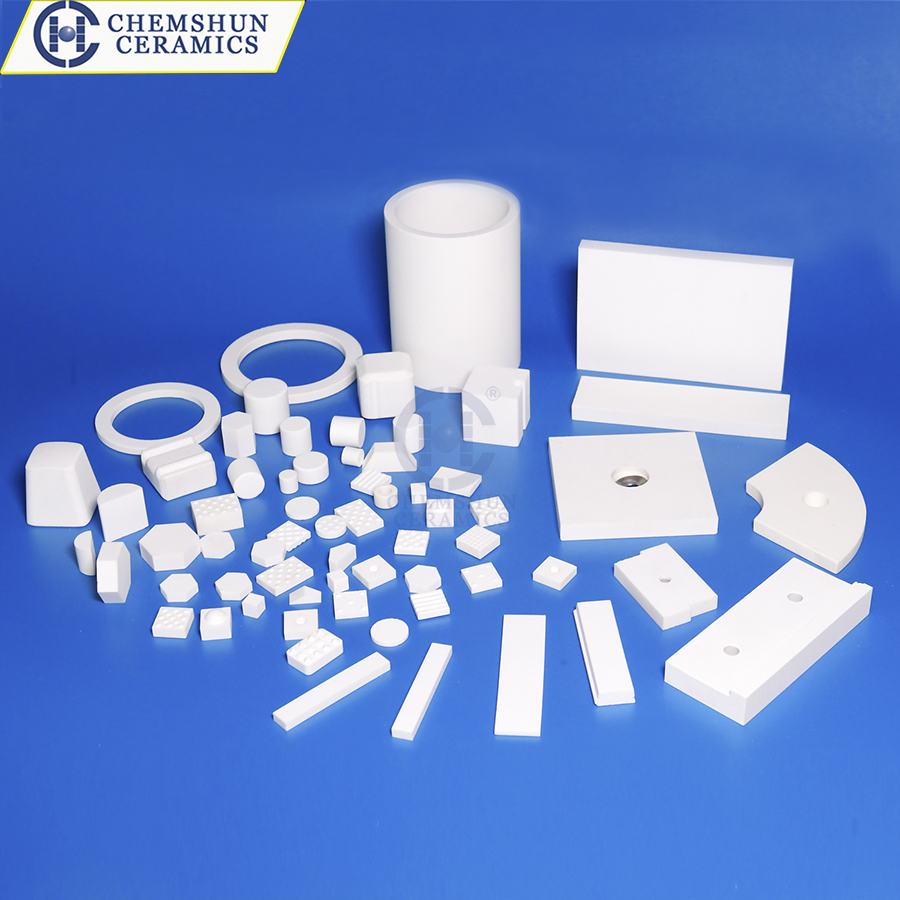Top articles
- High-purity 99.7% alumina ceramics helpful to semiconductor manufacturing technology
- Alumina Ceramic Grinding Balls: High-Efficiency Solutions for Industrial Grinding
- How to Select Suitable Wear-Resistant Ceramic Lining Tiles in the Mining Industry
- Advantages of Ceramic Rubber Composite Liners in Industrial Applications
- How to Install Alumina Ceramic Liners for Long-Lasting Adhesion?
- 99% alumina bulletproof ceramics are the preferred materials for protective devices
- Alumina Ceramic Substrates:Characteristics,Advantages,Disadvantages,and Applications
- Why do alumina industrial ceramics wear out?
- The reason of abrasion resistant ceramic tiles falling off when pasted on equipment
- Seven aspects of advantages & applications of alumina ceramic substrates
Latest articles
- High-purity 99.7% alumina ceramics helpful to semiconductor manufacturing technology
- Alumina Ceramic Grinding Balls: High-Efficiency Solutions for Industrial Grinding
- How to Select Suitable Wear-Resistant Ceramic Lining Tiles in the Mining Industry
- Advantages of Ceramic Rubber Composite Liners in Industrial Applications
- How to Install Alumina Ceramic Liners for Long-Lasting Adhesion?
- Welcome to EXPOMIN 2025
- 99% alumina bulletproof ceramics are the preferred materials for protective devices
- Alumina Ceramic Substrates:Characteristics,Advantages,Disadvantages,and Applications
- Why do alumina industrial ceramics wear out?
- Chemshun Ceramics Chinese New Year Holiday Notice
Your browsing history

Summary of eight forming processes of structural ceramics ③
Ceramic forming is an important part of the ceramic preparation process, the forming technology to a large extent determines the uniformity of the green body and the ability to prepare complex shaped parts, and directly affects the reliability of the material and the cost of the final ceramic parts.
5. Slip casting
Slip casting is a very simple and flexible molding technology, its basic principle is to have a high solid content and good fluidity of the slurry into the mold (usually with gypsum mold), waiting for the green body to have a certain strength and then release the mold.
The basic process flow is: powder - slurry - grouting - demoulding -drying - shape blank
The main process methods of slurry molding are: hollow grouting, solid grouting, pressure grouting, vacuum auxiliary grouting, centrifugal grouting.
Advantages:
① The use of cheap plaster mold, simple equipment, low cost, suitable for the manufacture of complex shape ceramic parts and large size ceramic products;
② Convenient molding process control, high product density.
Application: traditional ceramic industry, modern precision ceramics, structural ceramics products, etc.
6. Extrusion molding
Extrusion molding is the ceramic powder and clay, or organic binder and water mixed and repeated mixing, and through vacuum degassing and stale process links to make the billet to be extruded to obtain good plasticity and uniformity, and then in the extrusion screw or plunger role, through the extrusion of the mold at the mouth of the extrusion to get the desired shape of the product.
Extrusion molding requirements for mud:
①Powder fineness and shape: fineness requirements are finer, rounded shape.
②Solvent, plasticizer, binder, etc. : the amount should be appropriate, and the mud must be highly uniform, otherwise the quality of the extruded body is not good.
Advantages of extrusion molding:
① Small pollution, easy to operate automation, continuous production,high efficiency.
② Suitable for the production of tubular and rod products. But the structure of the nozzle is complicated and the machining precision is high.
Disadvantages: Due to the large number of solvents and binders, the body shrinks greatly during dry firing, and the performance is affected. It is easy to have defects such as warping deformation, layered structure, tearing, cracking, solid-liquid separation, pores and inclusions.
Application: Extrusion molding is suitable for manufacturing ceramic products with uniform cross section, especially for tubular or rod-shaped products with high aspect ratio, and can be used for forming non-oxide ceramic products such as various oxide ceramics, carbides and nitrides.
At present, it is widely used in the manufacture of ceramic furnace tube, electromagnetic insulator, catalyst carrier or support body, heat exchanger tube, honeycomb ceramic carrier for automobile exhaust filter, ceramic sticks and other ceramic products, and can also be used in the molding of chip capacitors, magnetic material substrate and electronic substrate.
See the next article for the remaining several structural ceramic molding processes.









